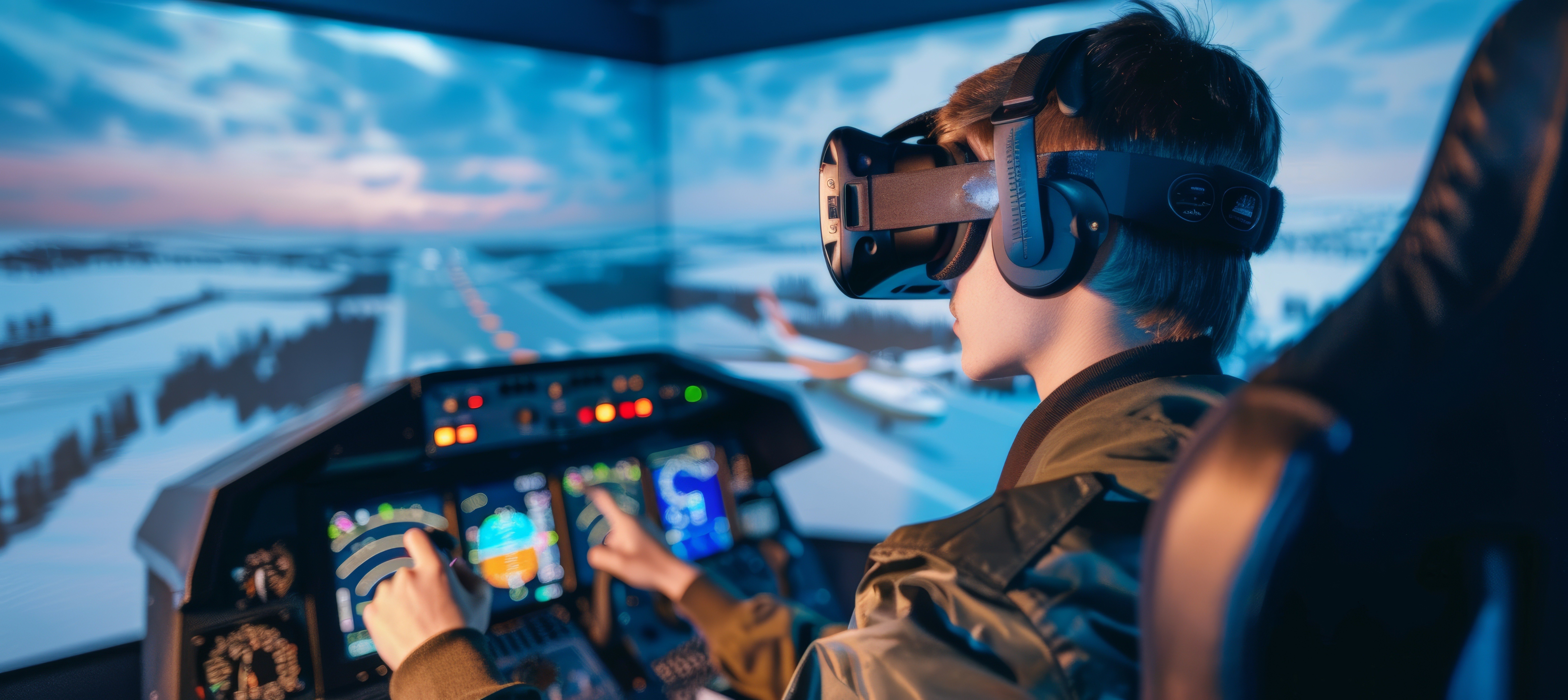Trends in Aircraft Training Simulation

Crew readiness pilot skill development in the aviation industry is undergoing unprecedented advancement. Here at Dedicated Computing, we play a key role in supporting the infrastructure of these advancements. Today we’d like to touch on some of the key trends driving these exciting changes.
Aviation is experiencing a major transformation period. In November 2023, the United States military announced the Pilot Training Transformation (PTT) program to modernize pilot training efforts through technologies already being implemented in the commercial space. The Defense Innovation Unit (DIU) is leveraging the PTT program to introduce replica cockpit systems and other gaming technologies like XR/VR headsets, enhancing their flight training capabilities and providing a lower-cost, lower carbon footprint alternative training method.
Legacy training methods require both military and commercial markets to dedicate extensive resources to training. These programs rely heavily on aircraft flight hours and significant direct hands-on interaction between instructors and pilots. Improving the quality and efficiency of these training techniques is paramount to drastically reducing the amount of time it takes to become proficient.
Below are the ways in which these efforts are developing.
High-Fidelity Embedded Systems
To achieve their goals, commercial and military organizations such as the PTT are leveraging purpose-built engineered embedded computing solutions such as those offered here at Dedicated Computing. We specialize in creating integrated hardware, software, and services for all fidelity systems that process data to meet the demand of the next generation of flight training simulators.
These all fidelity systems are needed to produce realistic graphics in high-resolution displays. Immersion in a training environment starts with accurate scenery reproduction. The latest flight simulators can replicate:
- Complex terrain
- Time of day
- Various weather conditions
Layered on top of these commercial use cases is the evolving threat landscape, and the military is planning to utilize this technology to prepare troops for multi-mission readiness exercises. High-fidelity simulation creates realistic experiences for a diverse range of situations that closely mirror actual flight scenarios.
Real-Time Data
In addition to high-fidelity systems, next-generation processors are leading the way in flight simulation realism by integrating live air traffic data. The ability for flight simulators to connect to live air traffic control networks is already here, solidifying the authenticity of the training experience by simulating the presence of other aircraft. Virtual, real-time airspace training allows pilots to safely practice communication with air traffic control as if they were in the air.
Motion & Control
Flight simulation companies are pushing the envelope by perfecting the sensations of motion and control into interactive cockpits. This is the absolute cutting edge of flight simulation technology.
These companies are bringing all of the latest aircraft to life by integrating the aircraft’s specific movements into their flight simulators—not only the movements but also the physics. A user learning to pilot a Boeing 737 will be constrained within the simulator by the maximum 20,600 pounds of thrust and static G-forces ranging from +2.5g to -1.0g, just like they would be in real life.
The Future of Aviation Training Is Evolving
As flight simulation technology advances further, AR systems continue to advance as well with more accurate cockpit versions, and the ability to seamlessly transfer aircraft is already a reality within VR systems where one can easily switch out the rudder, stick, and throttle. The same user training to pilot that Boeing 737 will soon be able to easily switch virtual aircraft cockpits to a P-51 Mustang to escort a heavy bomber during a WWII mission. Meanwhile, current military personnel will be running virtual sorties with the F-35.
In such an exciting time for the flight simulation market, we at Dedicated Computing take great pleasure in helping to make these advancements in pilot training software development possible with our embedded computing solutions. Contact us to learn more about our products and capabilities. You can also request a meeting with one of our experienced engineers to discuss the specifications of your project.

